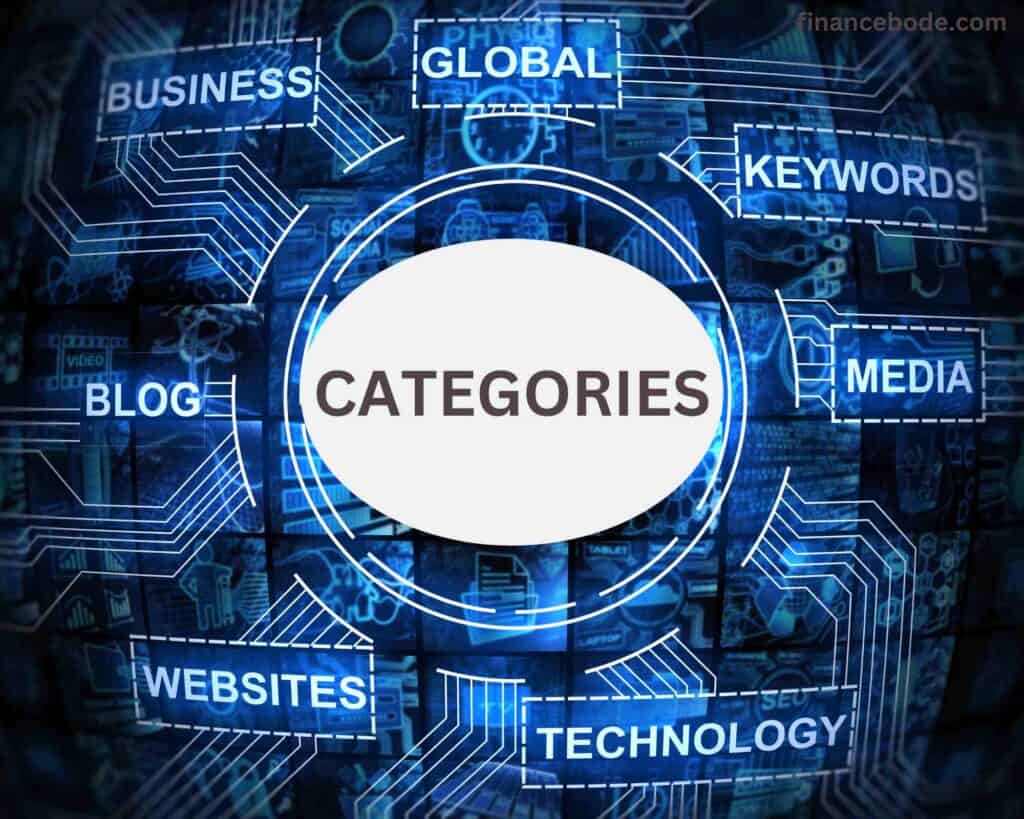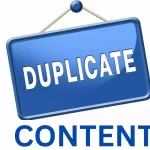You’ve started a blog, and now it’s time to create the categories; but how precisely do you create them? How many categories should you create? Should you create subcategories? What are even blog categories?
Categories are like the table of articles of a blog. They are incredibly vital for developing a blog and for search engine optimization.
With categories and tags, you provide your website visitors with a simple method to rapidly grasp your material and search for subjects that are relevant to them.
I’ve written over 500 blogs in my life, and in this post, I’ll tell you my best suggestions for creating a blog category on new sites.
See also: Tips to get to the front page of Google easily
What Are Blog Categories?
Blog categories are broad phrases that divide your site’s posts into larger subject areas.
In doing so, higher and lower categories may be established and hierarchically allocated to one another.
Therefore, it can be claimed that a blog’s categories are analogous to a table of contents.
For a basic blog, you don’t need subcategories. 3 – 7 blog categories are enough for it.
WordPress defaults to the “General” category. This implies that every post MUST be allocated to a category. It is suggested to add extra categories to the “General” category.
If you don’t choose a category
Blog posts not allocated to a category are automatically assigned to the “General” category by WordPress.
If you have renamed this category with a new name, uncategorized posts will automatically go into this category.
Examples of blog categories
An example of categories on a travel blog may be the continents of Europe, Asia, South America, North America, and so on.
The various country of a continent might be classified as subcategories.
People often mistake the word “Tag” for categories. They are different!
Let’s take a brief look at Tag before we proceed.
What Are Tags?
Just as categories may be compared to a table of contents, keywords can be likened to the index of a book. Keywords are sometimes known as “tags.”
Tags are not hierarchical. So there are no sub or super terms.
They assist in representing the themes of blog content more specifically in addition to the category.
How Do Categories Become Pages?
If you establish a new category as a subject for your blog, your system will also generate a category page at the same time.
This operates totally automatically and without your interaction.
It doesn’t matter whatever blog system you use. Both WordPress and all other blog platforms organize your content in this manner.
Sometimes you may also come across the word archive pages in relation to the categories. It’s merely a new name for the same page.
So when I speak about category pages in this post, I also mean your archive pages.
Importance Of Blog Categories
A category or archive page is a page on your blog that teases all blog posts on a subject.
So if you publish a full series of baking recipes and assign them to the baking recipes category, a category page with links to the real articles is automatically produced.
These category sites are perfect power boosters for your search engine optimization.
- They indicate how thoroughly you address a given issue to the search engine.
- You make it easy for visitors to explore your blog and keep them on the site longer. Also a favorable indication for Google.
These category sites are so strong that all your blog posts immediately connect to this category page.
This is prevalent in blog systems, so you do not have to set it up individually.
Now, if all your blog posts on a single subject link to the topic’s category page, it considerably raises that page’s link strength.
Reason enough to give more attention to such an essential website, right?
Why Are Blog Categories So Important For SEO?
Blog category pages are not just significant in terms of user experience.
Category pages are almost the most important content on a blog in terms of search engine optimization (SEO) and exposure.
Because these clusters are appreciated and assessed highly by Google.
The blog categories are ready to be worked out in creating the blog. Ideally, they are based on keyword research and subsequent keyword strategy.
Individual pages must be developed for the categories and populated with search-engine-optimized content.
In addition, category texts are especially suitable for inserting internal connections. This also boosts organic visibility.
How Do I Create Categories For My Blog?
To create the categories for your blog, you must log in to your website’s backend.
Hovering over the phrase “Posts” in the side panel of the WordPress dashboard displays a submenu where you will discover the words “Categories” and “Tags.”
After clicking “Categories,” you will be transported to a page where you will discover an overview of all categories.
By default, the category “General” or “Uncategorized” is offered here.
Since every post needs to be allocated to a category, all posts that do not have their own category fall into the “General” category without exception.
To prevent this, create relevant categories as soon as feasible and assign each post to a single category.
If you wish to have a sitemap of the categories recorded in the Google Search Console, please also fill out the SERP snippets, i.e., the text fields of the Yoast SEO or Rank Math plugins, while modifying the categories.
How Many Categories Does Your Blog Need?
The number of categories should depend on the number of your specialist topics.
For me, they are “Freelancing,” “Blogging,” “SEO,” “Self Publishing,” and “Email Marketing.”
Following the thumb rule, you should identify at least three and a maximum of seven categories.
The more categories you pick, the more confused your blog themes become to the users of your website.
The categories are thus occasionally only shown partially on smartphones.
I once saw a blog that had 25 categories. It was impossible to cover them all at a glance, and the range of topics was overwhelming.
The categories are not only utilized for SEO but also for better user advice. They are there to assist readers and keep them on the site.
How To Create An SEO-Optimized Blog Category
Choose precise keywords for your category naming.
Naming your categories should notify Google what essential topics your site is about. The more Google can understand the topic, the higher your rank for this topic.
Let’s imagine we operate a blog on growing cucumbers. I gather cucumbers in my garden every year, and that’s why the subject suits me so nicely right now
If we were to categorize our blog content topically, the following categories might spring to mind, for example:
- Cultivation
- Care
- Greenhouse planting
- Processing
All 4 areas are rationally designed for Google’s artificial intelligence and contribute to the fundamental theme of cucumber cultivation.
However, I regularly see categories such as beginners or suggestions in blog reviews. Completely nonsensical and not at all fit for Google on the issue.
Before developing categories, sit down with a piece of paper and jot down 5 to 8 subtopics of your primary issue that are very significant.
Whenever you post an item on your new blog in the future, it should fall into one of these categories.
If it doesn’t fit, don’t write it!
Write suitable category descriptions.
Writing category descriptions is incredibly straightforward, particularly for WordPress users.
And yet only some people do it.
How to write a blog category description
Go to Posts -> Categories in your admin menu and pick a category.
You will discover a separate text box on the edit page exclusively for the category description.
Anything you enter in this text box will subsequently display above your articles on the category page.
This a great way to properly introduce your visitors to the issue and show Google more precisely what you are about.
If you want to increase your SEO and the usability of your newly launched blog, you should link your 2 to 3 most significant and best blog posts on this subject in your category description.
This informs your readers which highlights are waiting for them, and Google knows certain articles are essential to you.
If possible, incorporate photographs in your category description
An image speaks more than a thousand words and may also enable you to optimize your category pages for search engines.
Especially if you add the category’s name in the so-called alt tag of the image.
Alt tags are meant for SEO and to target visitors having difficulty seeing to make your site simpler to read.
There are special browsers for blind persons that can read and read out these alt tags.
The alt tag explains the content of the picture but may also be used to put your keyword.
You can generate this alt tag in WordPress posts using the image settings.
Tips For WordPress Blog Categories
When you create a new WordPress blog, it always has a pre-configured default category. Optionally, this is termed General or Uncategorized.
WordPress places every content into this category you have not designated to a distinct category.
Unfortunately, this standard category cannot be eliminated.
That’s why I’ve gotten into the practice of renaming them with a different category name in one of the initial phases.
Then there won’t be any complications afterward.
Conclusion
Categories and keywords are critical characteristics of blog posts. Each post requires a category, the name of which should be distinct, clear, and straightforward.
Categories are like the table of articles of a blog.
They are helpful for SEO, provide appropriate user guidance, and make it simpler for visitors to locate material that interests them more rapidly.
In short, you must remember this when creating blog categories:
- Try to restrict yourself to a few blog categories. 5 to 8 categories are excellent.
- Name your categories with unique keywords that complement your blog theme.
- Try to give each category page a title and description to increase its SEO value.
- Make sure that categories and tags do not contradict thematically.
FAQ
What are Categories?
Categories are a technique for organizing content.
Categorization enables people to put your material in a particular category where they can be grouped and discovered more quickly.
Why should I separate WordPress blogs into categories?
By splitting your WordPress blogs into categories, visitors may quickly and easily discover the material they are searching for.
It also helps web admins to arrange the pages more efficiently by splitting information into appropriate sections.
How to create a category in WordPress?
To create a category in WordPress, go into your WordPress dashboard, navigate to Posts, and pick Categories.
Then provide the name and description of the category and click Add.
Can I delete blog categories?
Yes, categories can be deleted. To accomplish this, go to “Categories” under “Posts.” In the list of categories, you can change and delete categories in WordPress.
The blog items allocated to this category will remain.
Be careful to recategorize or recategorize these blog posts so they don’t wind up in the General or incorrect categories.
Which content should not be under a blog category?
Before you pick the categories:
1. Ask yourself whether your target audience wants this or that category phrase.
2. Assign relevant categories that reflect a generic phrase.
3. Avoid generic phrases like “tips,” “FAQs,” “archive,” “general,” “examples,” and so on.
Such content is worthless.
Do categories have to be displayed in the footer?
That’s a question of taste. When readers scroll down to the bottom of a page, they may navigate straight to the blog posts that interest them through a list of categories.
In this regard, categories in the footer are excellent for useful advice.
Some website owners enjoy a simple footer without many frills and merely refer to their legal materials.
That’s alright too. In this scenario, the categories must be presented elsewhere on the website.
Can I change my categories once I create them?
Yes, you may change your categories once you create them. To accomplish this, go to Posts and pick Categories.
Click on the category you wish to alter and change the name or description.
Can I arrange categories?
Yes, you can arrange categories in WordPress using a plugin like Category Order and Taxonomy Terms Order. This plugin lets you sort categories by name, description, number of posts, etc.





